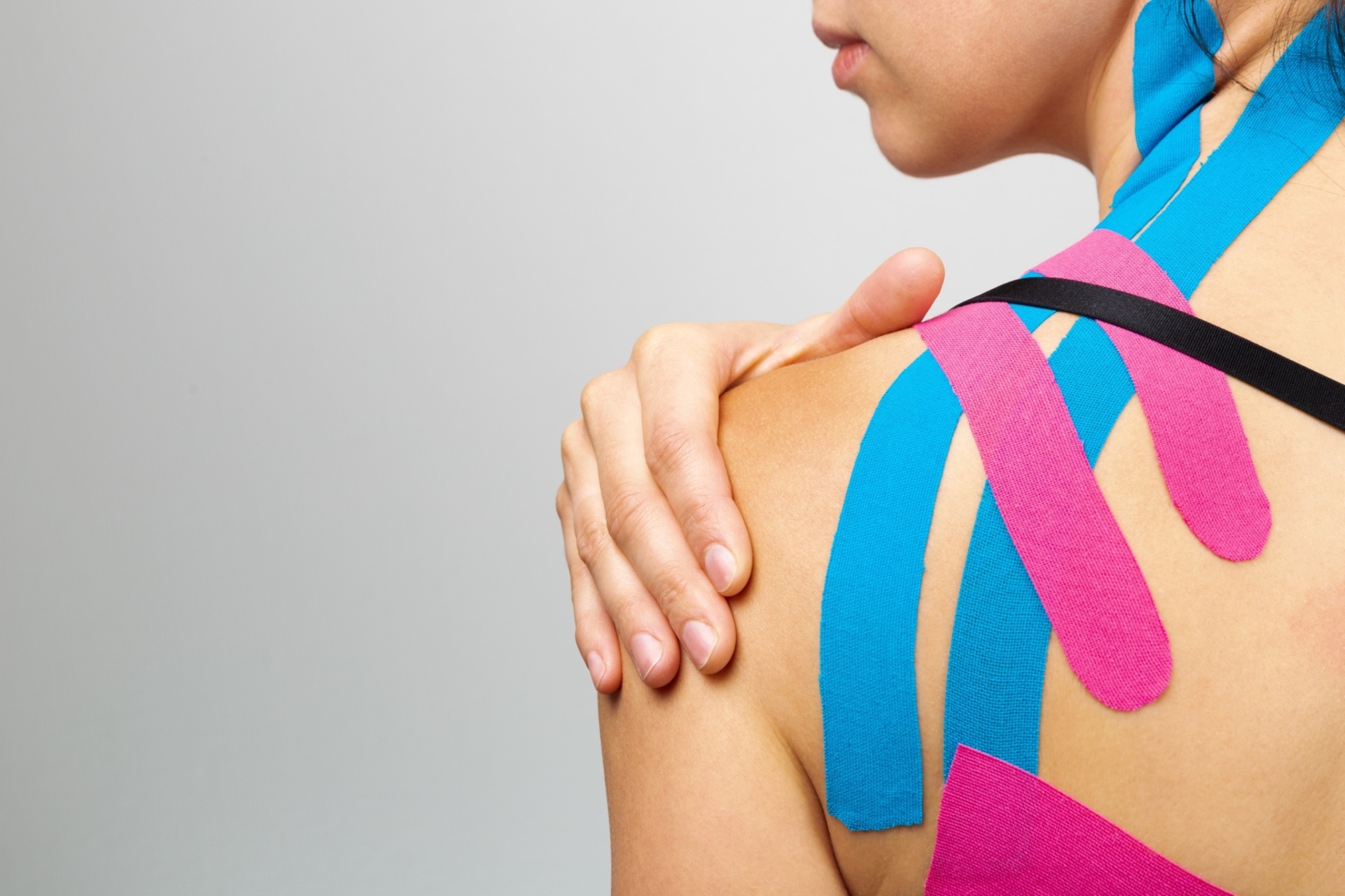
Kinesiotaping (KT) is an intervention that is used by many people for lots of orthopaedic and neurological conditions, even athletes. It can also be helpful in a setting of hypermobility. It involves placing very stretchy tape on the skin, usually in-line with muscle fibers, that can help increase sensory input into the brain to improve proprioception, a feeling of greater stability, and even might reduce pain sensitivity. Research is mixed about the benefit, some patients do like it a lot, and for the most part it's very safe to try.
Sometimes patients can have allergies to the tape so if you have known allergies to adhesives then just be cautious with giving it a try. If you do, try just a very small piece at first. You might limit wearing it to 1-2 days max to reduce any reactions and apply to clean skin after wiping with alcohol or soap and water. Certain brands react with some people, others do not. Sometimes trying a different brand can help. Another option to try is to apply a hypoallergenic undertape, for example "cover roll" on the skin, then apply the kinesiotape on top of that. There are a number of different taping patterns that you can find online, and the most simple pattern can often work just as well as more complex patterns. If you're so inclined, give it a try! Tell us in the comments below if this has helped you.
Author: John Leschitz, PT, DPT, FAAOMPT
 Connect
Connect
 Connect
Connect
I get a lot of benefit from k-tape, even if it’s just a small strip of tape under my kneecaps. It can sometimes on a good day, but my pain in half, because I think proprioception is a component of my pain.
It’s made me wonder if I could benefit from something like the Body Braid, or anyone out there has experience with it?
-
 Like
Like -
 Helpful
Helpful -
 Hug
Hug
2 ReactionsThe KT resource shared is excellent and helpful! I have also relied heavily on kinesiotaping (KT), especially for my back and hips. I still recall how amazing it felt the first time my PT used KT on my back (for a brief moment I thought I found a solution to my pain, but this was before I knew I was HSD). My PT demonstrated the technique and my spouse still helps apply it for me. I am sensitive to the adhesive (as so many of us are), but I still use it when I am having a particularly bad flare-up. I usually leave it one for 3 -5 days then peel it off carefully after a shower, while still in the hot steam. I’d love to know if anyone has recommendations for the taping the psoas and/or reducing irritation from using the tape!
I do the same, with leaving it on for 3-5 days, and then soaking it in the shower to try to get it off.
The only other thing thing I found to get the adhesive off (after the tape is gone) is to use mineral oil on a cotton swab and put it on the sticky parts still stuck to my skin. I got the idea because it’s on the ingredients list in eye makeup remover, but that might be hard to do on your back.
I also found that different tapes are different to remove… I’ve found Rock Tape the easiest to come off (yet somehow it stays secure). I tried KT brand tape, Kinesio brand, then Rock tape, and the Rock tape was kindest to my skin, but everyone’s different.
I was the person who posted about the Body Braid, and depending on what kind of back pain you have, it might be worth a try? I saw a PT at Johns Hopkins with their POTS Clinic (so they also see many patients with hypermobility) and they had one I could try, and it felt amazing, very similar to how I feel with k-tape, but for my back and core.
They’re ridiculously expensive, but there’s a 90-day return policy, which is why I decided to try it at home. The great part is it’s not tape, so no irritation! I’m still tinkering with it though.
-
 Like
Like -
 Helpful
Helpful -
 Hug
Hug
4 ReactionsMy daughter is allergic to adhesives that contain pine tar (also known as colophany and rosin). It is also common in cosmetics and wood glue. She cannot use KT brand tape, but has not had any problems with the Rock Tape brand. She even uses the extra sticky, because it stays better than the regular or sensitive.
-
 Like
Like -
 Helpful
Helpful -
 Hug
Hug
5 ReactionsMay I ask what the process was for being diagnosed so specifically? I have terrible reactions to adhesives
My daughter determined that she was allergic to the pine tar (AKA Colophany, Rosin, and many more names) found in many adhesives and glues when she had quite a reaction to Elmer’s Wood Glue, but never reacted to their white glue. She did some digging on the internet and determined that the pine tar was the common ingredient in many of her reactions, including working in our yard moving tree trimmings. We did not do any testing. Rosin powder is commonly used in sports and violin/cello, so it is widely available if you wanted to see if you react to pure colophany. A quick internet search showed the multitude of products that can contain it including dental products, feminine products, diapers, laundry soaps, paints, varnishes, cosmetics, etc. Unfortunately even hypoallergenic products can contain it.
-
 Like
Like -
 Helpful
Helpful -
 Hug
Hug
2 Reactions